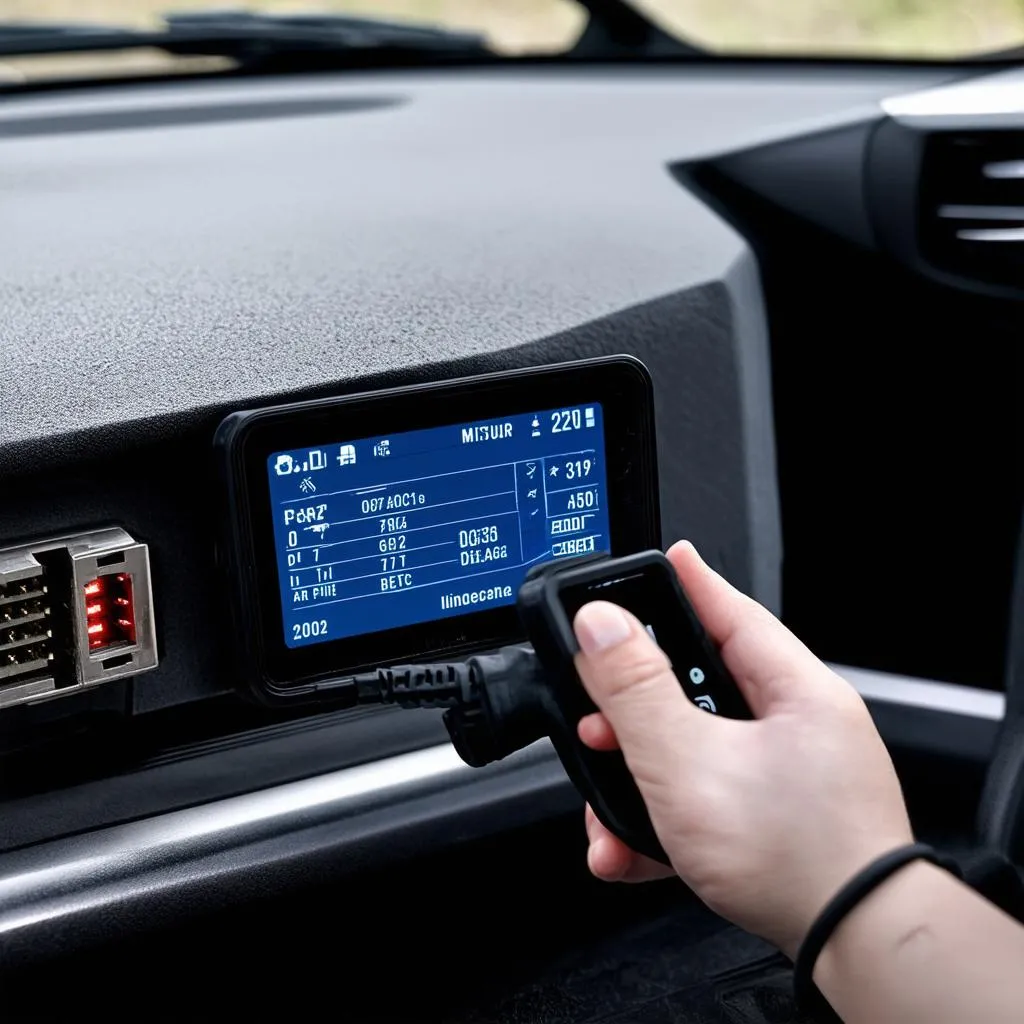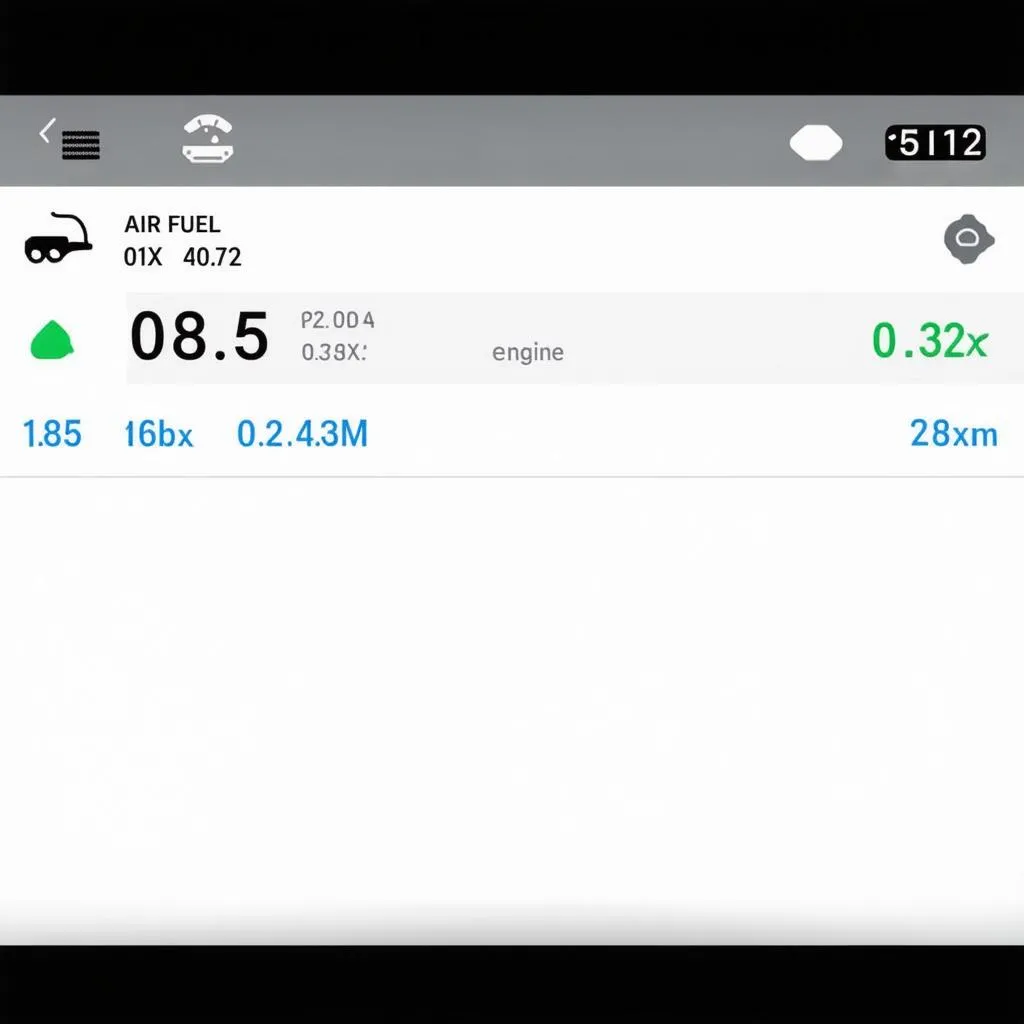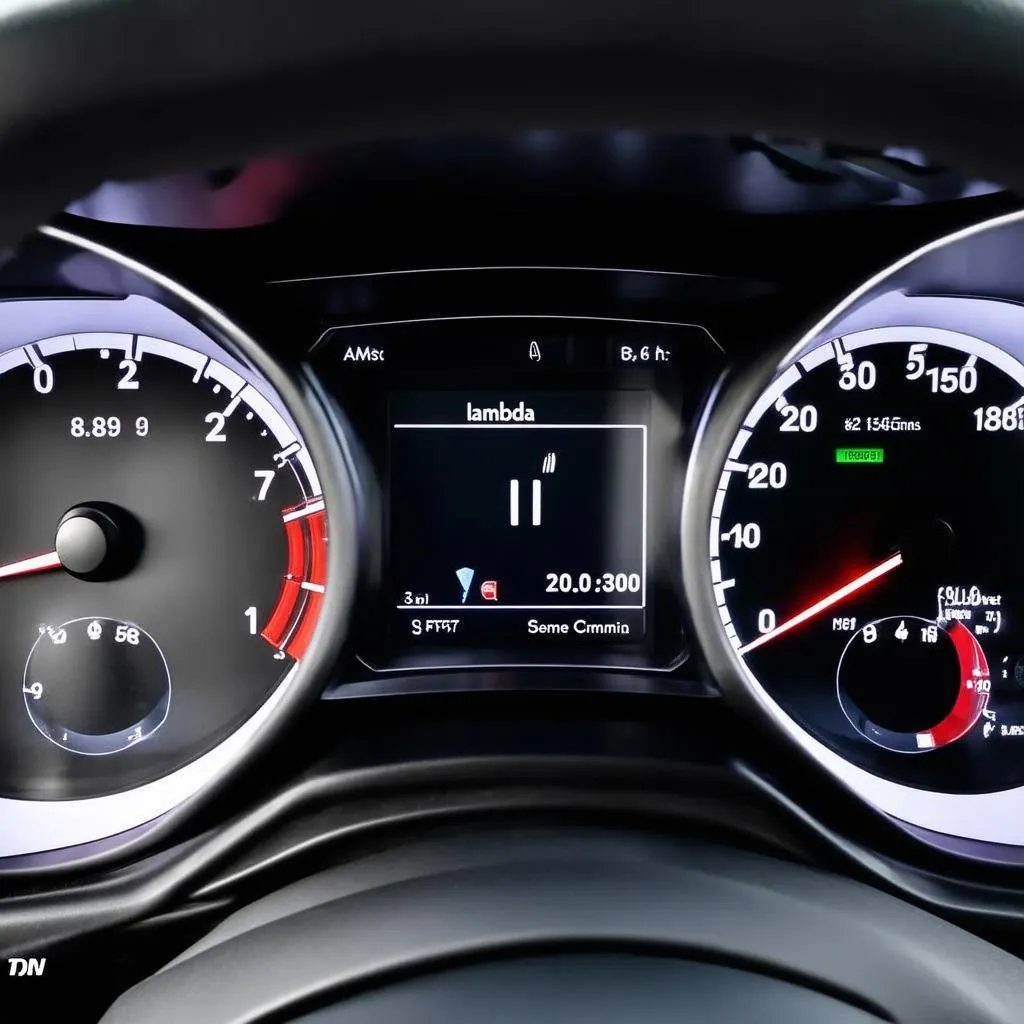Have you ever wondered how your car’s engine knows just the right amount of air and fuel to burn? It’s all thanks to a complex system that constantly monitors and adjusts the air fuel mixture. This process, called fuel-air metering, is crucial for optimal engine performance, fuel efficiency, and emissions control. But how can you, as a car owner, monitor this crucial aspect of your vehicle’s health? The answer lies in the OBD2 system and its ability to provide valuable insights into your car’s air fuel mixture.
Understanding the Significance of Air Fuel Mixture Monitoring
The air fuel mixture is the ratio of air to fuel that enters the engine’s cylinders for combustion. An ideal air fuel mixture is vital for:
- Optimal Engine Performance: The right ratio ensures smooth, powerful engine operation.
- Fuel Efficiency: A lean mixture (more air than fuel) saves gas. However, a very lean mixture can lead to engine damage.
- Reduced Emissions: Precise fuel-air control minimizes harmful emissions like carbon monoxide and unburnt hydrocarbons.
Think of it like baking a cake – the right balance of ingredients (air and fuel) ensures a perfect, delicious outcome. In our car analogy, a perfect air fuel mixture means a smooth, efficient, and environmentally friendly driving experience.
How to Monitor Air Fuel Mixture using OBD2
The OBD2 system is a diagnostic tool that allows you to access and interpret data from your car’s various systems, including the air fuel mixture. You can monitor this crucial parameter using several methods:
1. Using an OBD2 Scanner
An OBD2 scanner is a handheld device that plugs into your car’s diagnostic port. It can read and display real-time data, including the air fuel mixture. Most scanners show the air fuel ratio as a lambda value, with 1.0 being the ideal stoichiometric ratio.
2. Using a Smartphone App
Many smartphone apps are available that use your phone’s Bluetooth or Wi-Fi to connect to your car’s OBD2 port. These apps can display live data, including the air fuel mixture, and often offer additional features like fault code reading and performance tracking.
3. Using a Dedicated Gauge
Some aftermarket gauges are specifically designed to monitor the air fuel mixture. These gauges can be installed on your dashboard and provide a continuous reading of the air fuel ratio.
Interpreting the Data
When you monitor the air fuel mixture, you’re looking for any deviations from the ideal 1.0 lambda value. Here’s what to watch out for:
- Rich Mixture (Lambda < 1.0): This means there’s more fuel than air, which can lead to poor fuel economy and increased emissions. It could indicate issues like a faulty oxygen sensor, clogged fuel injectors, or a malfunctioning fuel pressure regulator.
- Lean Mixture (Lambda > 1.0): A lean mixture can lead to engine damage, particularly at high speeds or under heavy load. Potential causes include a leak in the intake manifold, a faulty mass airflow sensor, or a clogged air filter.
 OBD2 scanner for monitoring air fuel mixture
OBD2 scanner for monitoring air fuel mixture
OBD2 and the Air Fuel Mixture: Frequently Asked Questions
Q: What are the common OBD2 codes related to air fuel mixture problems?
- P0171: System Too Lean (Bank 1)
- P0172: System Too Lean (Bank 2)
- P0174: System Too Lean (Bank 1)
- P0175: System Too Lean (Bank 2)
- P0171: System Too Rich (Bank 1)
- P0172: System Too Rich (Bank 2)
- P0174: System Too Rich (Bank 1)
- P0175: System Too Rich (Bank 2)
Q: What are some other ways to monitor air fuel mixture without using OBD2?
While OBD2 is the most reliable and accessible method, you can also look for clues like engine misfires, rough idle, poor acceleration, or increased fuel consumption.
Q: Does the air fuel mixture affect car emissions?
Absolutely. An incorrect air fuel mixture can significantly impact your car’s emissions. A rich mixture (too much fuel) produces more carbon monoxide and hydrocarbons, while a lean mixture can increase nitrogen oxides.
Q: Can I adjust the air fuel mixture myself?
While you can use OBD2 to monitor the air fuel mixture, adjusting it yourself is generally not recommended. Improper adjustments can lead to engine damage, reduced fuel economy, and increased emissions. It’s best to consult a qualified mechanic for any air fuel mixture issues.
Car Manufacturers and OBD2 Support
Most modern vehicles built after 1996 comply with OBD2 standards, making it possible to monitor the air fuel mixture across various makes and models. Some notable car manufacturers who support OBD2 are:
- Ford
- Honda
- Toyota
- Chevrolet
- BMW
- Mercedes-Benz
- Audi
- Volkswagen
The Role of Feng Shui in Car Maintenance
While Feng Shui doesn’t directly address the air fuel mixture, the principles of balance and harmony apply to car maintenance. Just as maintaining the right balance in your home promotes positive energy flow, ensuring the optimal air fuel mixture in your car contributes to a smooth and efficient driving experience.
Conclusion
Monitoring the air fuel mixture is an essential aspect of car maintenance that can help you keep your vehicle running smoothly, improve fuel economy, and reduce emissions. Using OBD2 tools, apps, or gauges, you can gain valuable insights into your car’s performance and identify potential problems before they become serious. Keep in mind, if you need any assistance with your OBD2 diagnostics or car repair, our team of automotive experts is available 24/7 to guide you. Contact us on Whatsapp: +84767531508.
 OBD2 app for monitoring air fuel mixture
OBD2 app for monitoring air fuel mixture
Want to explore more about OBD2 diagnostics and common fault codes? Check out our articles:
- How to read OBD2 codes for a 2015 VW Golf
- Understanding OBD2 codes for a 94 Ford Mustang Cobra
- Decoding Honda OBD2 code P0128
Remember, staying informed about your car’s health can lead to a safer, more enjoyable driving experience.
Don’t hesitate to share your thoughts and questions in the comments section below! Let’s keep the engine running smoothly!
 Dashboard with air fuel mixture gauge
Dashboard with air fuel mixture gauge